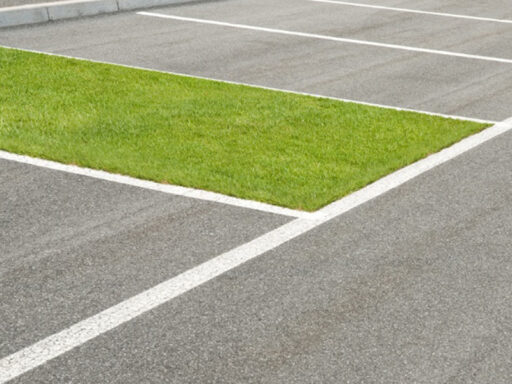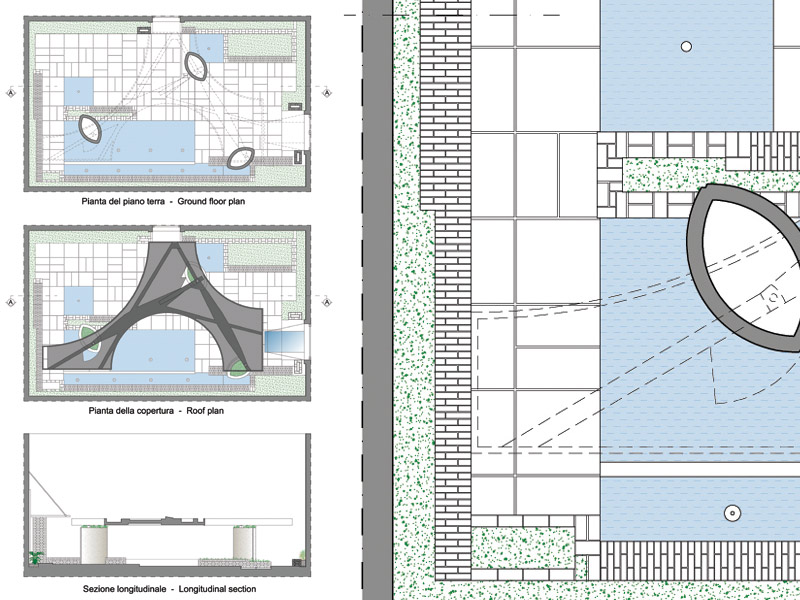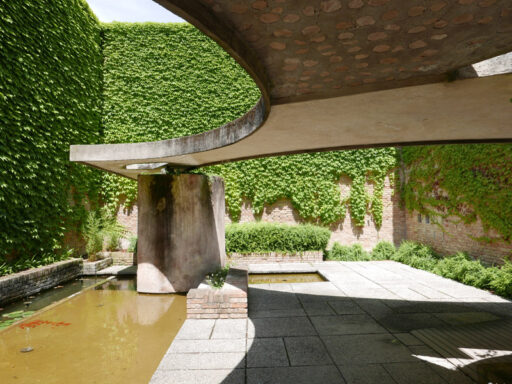Garden of Sculptures
Venice, XXVI Biennale, Giardini di Castello, Italian Pavilion 1951-1952
Location
Venezia, Italia
Year
1951-1952
Architect
Carlo Scarpa
In 1952, through the suppression of three rooms in the north wing of the Italian Pavilion, connected to the main body, space was created for a small courtyard. The purpose of the intervention was to improve the ventilation of the Italian pavilion, while creating an exhibition space for sculptures and relaxation for the visitor. The roofs and dividing walls between the rooms are demolished, while the perimeter walls are deprived of the plaster, leaving the bricks exposed.
Within the rectangular open-air space thus obtained, Scarpa inserts a trefoil canopy in reinforced concrete, supported by three steel spheres anchored on as many concrete pillars. The pillars have an almond-shaped section and are finished with “rough” and slightly pink plaster. The top of these pillars features a recess that functions as a planter.
The floor is made up of prefabricated concrete slabs, arranged both in a square shape and halved in a rectangular shape.
The walls that form the perimeter flower beds and the water tank are in exposed brick.
The function of the courtyard is to connect the exit of the main body of the Italy pavilion with the entrance of the exhibition hall to the north, currently used as offices.
Architectural project: Carlo Scarpa
Collaboration in the construction and structures management: Rossi and Wenter Marini engineers
Sources: Historical Archive of Contemporary Arts of the Venice Biennale, Venice; Carlo Scarpa Archive, Rome.
Drawings that can be purchased

22 €
related galleries
How the download works?
To download files from Archweb.com there are 4 types of downloads, identified by 4 different colors. Discover the subscriptions
Free
for all
Free
for Archweb users
Subscription
for Premium users
Single purchase
pay 1 and download 1































































